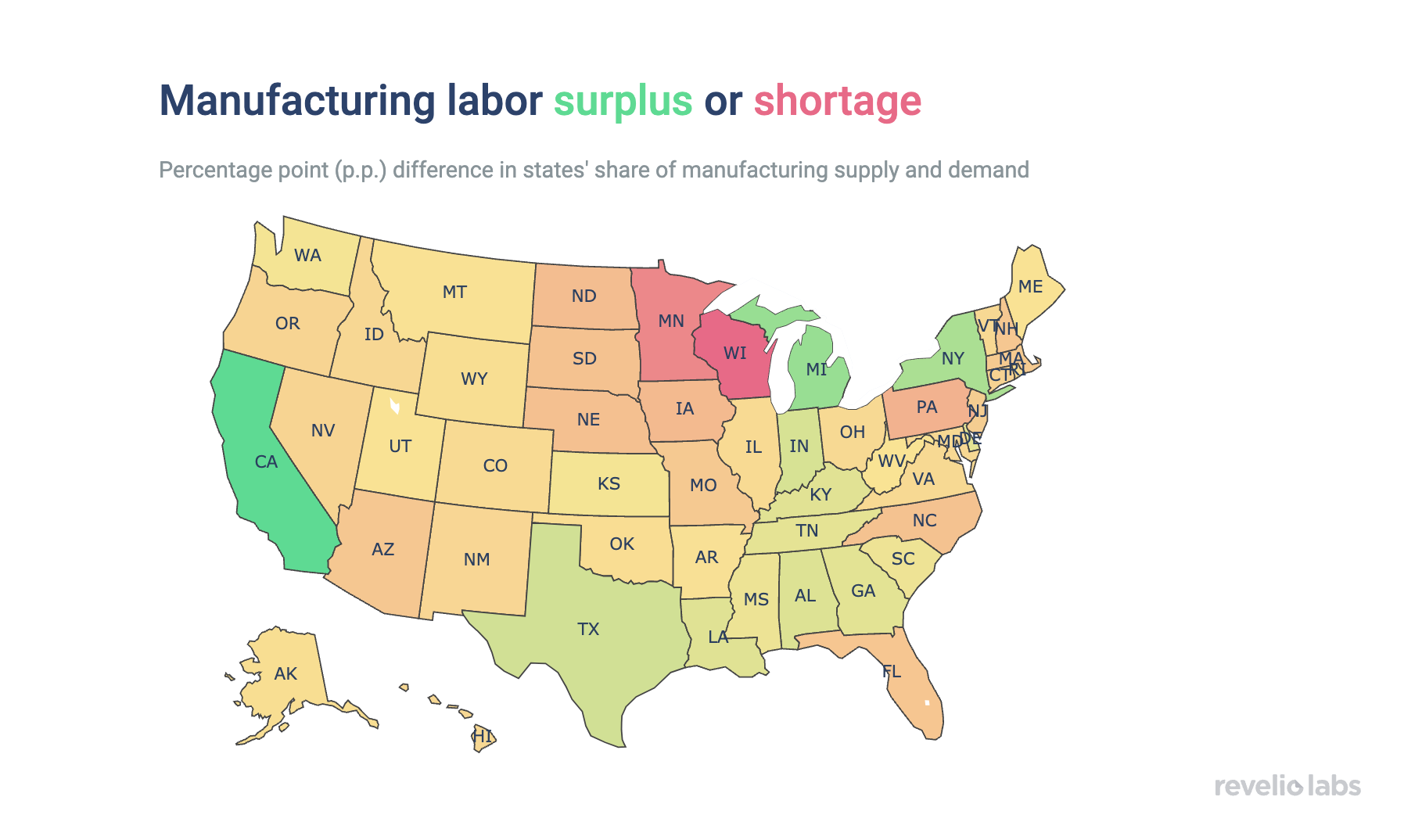New Manufacturing May Give the Rust Belt a Needed Polish
But does anyone want to move from California to Wisconsin?

Demand for manufacturing jobs has kept pace with the rest of the economy. Although the growth in the number of job postings in manufacturing has decelerated recently, it remains on par with the growth in job postings in other sectors.
The geographic distribution of workers represents a great challenge for manufacturers. Many states, such as Wisconsin and Pennsylvania, are facing shortages of workers, particularly where demand is the highest.
While the growth in manufacturing salaries has lagged behind other sectors, it has recently caught up and even surpassed the growth in salaries in other sectors.
The United States was once regarded as the global manufacturing superpower. However, with the rise of Chinese manufacturing, many businesses have offshored their manufacturing, posing a threat to the vitality in the U.S. Yet, post-pandemic supply chain disruptions have exposed the need to revive the U.S. manufacturing sector. Over the past three years, the Biden administration has embarked on revitalizing American manufacturing to secure critical supply chains through the Inflation Reduction Act and the CHIPS Act.
Using Revelio Labs workforce intelligence data, we see the results of these efforts in the rising demand for workers in manufacturing. Job postings for manufacturing positions increased ninefold in mid-2021 compared to the level in January 2020. Although the growth rate of manufacturing demand has recently declined with the deceleration of overall economic activities as a result of interest rate hikes, demand for manufacturing workers remains elevated compared to its level in 2020.


However, the manufacturing sector is still facing a significant labor shortage problem. A study by Deloitte and The Manufacturing Institute indicated that U.S. manufacturers struggle to find and retain talent—77% of manufacturers surveyed in 2021 reported ongoing difficulties in attracting and retaining workers and expect these difficulties to persist in the future. Meanwhile, the Biden administration added over 750 thousand jobs in manufacturing distributed across different states, with Georgia experiencing the highest growth in the number of jobs, followed by Pennsylvania. Given the preexisting concerns about finding talent, will the states with the largest influx of jobs have a hard time filling these positions?
Sign up for our newsletter
Our weekly data driven newsletter provides in-depth analysis of workforce trends and news, delivered straight to your inbox!
When using Revelio Labs workforce intelligence data to compare the share of supply and demand for manufacturing labor in each state, we find that many states are facing shortages of workers, particularly in states where demand is the highest such as Wisconsin, Minnesota, and Pennsylvania. Yet, some states have a surplus of manufacturing workers, notably California, Michigan, and New York. This difference may be due to the appeal of the locations where the positions are in demand—in large-shortage states like Wisconsin, Minnesota, and Pennsylvania, a significant share of the demand for manufacturing workers is in non-metropolitan areas relative to surplus states.


Relatively unattractive salaries for manufacturing positions can also be another reason why manufacturers face difficulty in finding and retaining workers. When examining salaries from job postings since 2020, we find that the growth rate of real salaries for manufacturing job postings has lagged behind salaries for similar roles outside manufacturing. However, this has changed in 2023, with the growth of real salaries in manufacturing catching up to the growth of other salaries, alongside the rise in demand for these positions.


As manufacturers navigate the resurgence of U.S. manufacturing, it is crucial for them to develop strategies to attract qualified workers. Salaries are only one piece of the puzzle. Manufacturers ought to consider benefits such as providing pre-employment training to attract and develop raw talent, fostering a positive work culture, and promoting work-life balance. Manufacturers should also consider upskilling and retraining their workers to increase employee retention.

